Learn the basics of digging on site

-
Simulation exercise
You are on the Kruger 2 site in Sherbrooke. You have to excavate a well that is 1 m x 1 m and 40 cm in depth, well 40N-47W. You must be precise, meticulous, and patient.
Good luck!
-
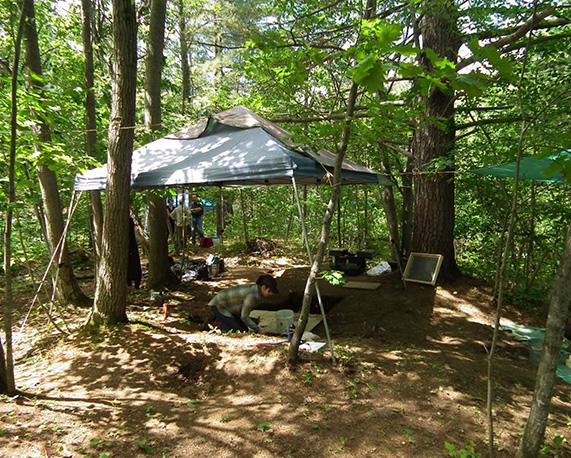
Kruger 2 site, Sherbrooke
-
Preparation
Take out your equipment:
-

A trowel
-

A measuring tape
-

Hermetically sealed bags
-

Sheets to be filled out
-

A camera
-

A field book
-
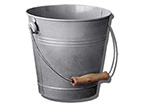
A bucket
-
Then, divide the well into four 50 cm x 50 cm quadrants.
-

Four quadrants
-
The excavation
You must dig the first 10 cm of a quadrant before moving to the next quadrant. The excavation is done by scraping the soil with a trowel in a method that keeps the walls vertical and the floor flat. Begin with the north-east quadrant. Using the trowel, remove soil and put it in the bucket.
-

First quadrant
-
Discovery of flakes
After scraping 3 cm of soil, you come across two blank New Hampshire rhyolite flakes.
-
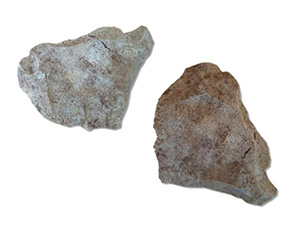
Two blank New Hampshire rhyolite flakes
-
Take them and put them in the bag labelled Flakes NEQ 0-10 cm for further analysis.
-
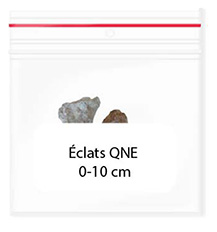
Flakes QNE 0-10 cm
-
Continue your excavation!
Discovery of a tool
At 5 cm deep, you discover a magnificent base of a Mount Kineo rhyolite biface.
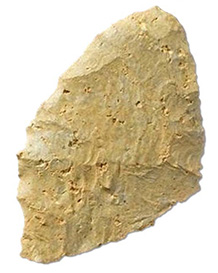
Mount Kineo rhyolite biface
As it is a tool, you must fill out the information sheet before storing it in an individual pouch. Begin by measuring its depth and location in relation to the north and west walls.
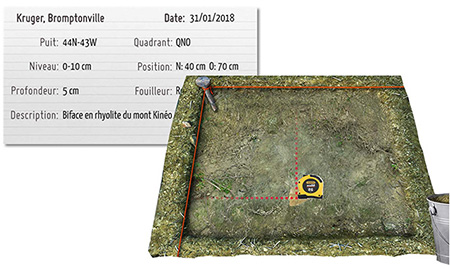
Depth and location
Documentation of the discovery
Take a photo of the biface.
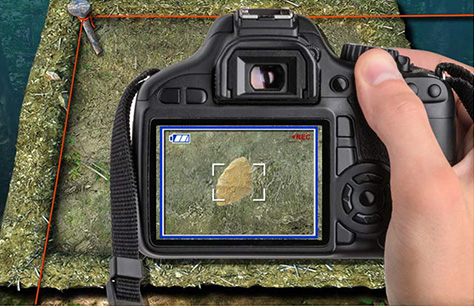
Photo of the biface
Then, store it in a bag with its sheet.

bag with sheet
Full bucket
After removing 5 cm of soil, you have completely filled your bucket. Now you have to pass the soil through a sifting screen.
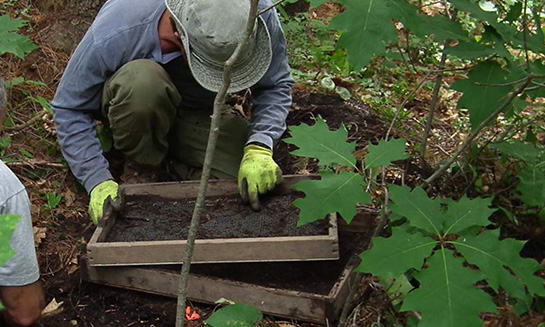
Pass the soil through the screen
There are over 100 blank flakes revealed. Store them in the Flakes NEQ 0-10 cm bag for further analysis.
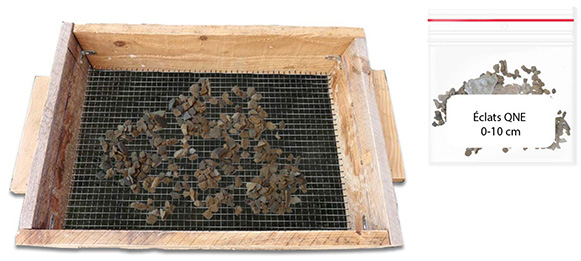
100 blank flakes
Continuing the excavation
Using your trowel, continue digging. After removing 1 cm of soil (6 cm in total), you find two blank chert flakes.
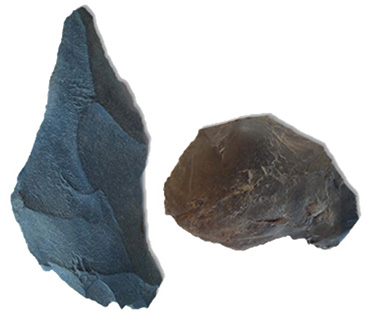
Two blank chert flakes
Store them in the Flakes NEQ 0-10 cm bag for further analysis.
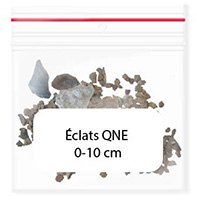
Flakes NEQ 0-10 cm bag
Continue your excavation.
Discovery
After removing another 3 cm of soil (9 cm in total), you find a small bleached bone, meaning a bone which was subjected to heat without being completely burned.

Small bleached bone
Store it in the Bones NEQ 0-10 cm bag for further analysis.

Bones NEQ 0-10 cm bag
End of horizon 0-10 cm
You remove the 10th cm of soil, but don’t find anything of interest. Your bucket is full, you now use the sifting screen. Sifting reveals almost 200 blank flakes. Store them in the Flakes NEQ 0-10 cm bag for further analysis.

Sifting screen
As you have reached 10 cm in depth, you must record your discoveries in the field book.

Field book
Overview
An archaeologist’s work demands a lot of patience!
In fact, digging this 40 cm deep 1 m x 1 m square requires two days of work by an experienced excavator. The more artifacts a site contains or the more complicated it is (roots, rocks, etc.), the more time is required for its excavation. This step only represents a small piece of an archaeologist’s work. Making sense of the discoveries through research and analysis is ten times longer.
In the Summer of 2015,
• 37 tools
• 148 bones
• 12 656 blank flakes
were found in the 40N-47W well on the Kruger 2 site’s area 3.
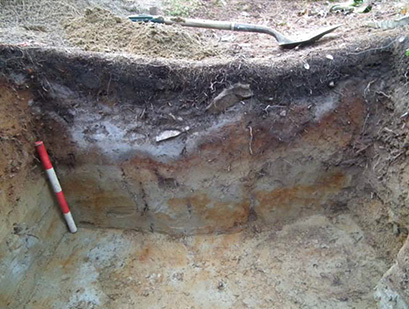
40N-47W well on the Kruger 2 site’s area 3

